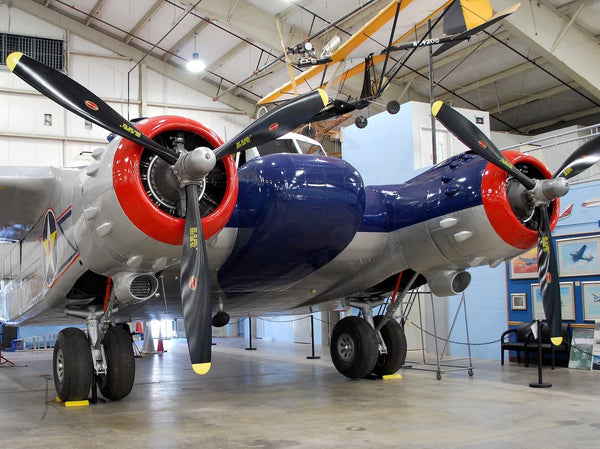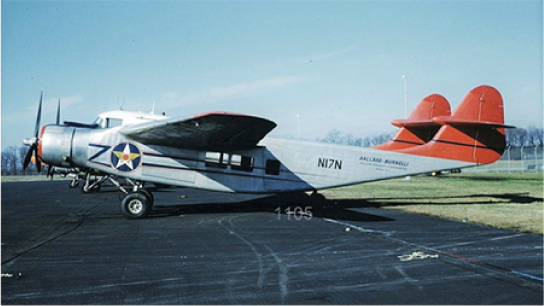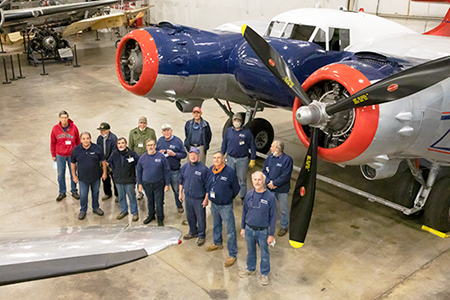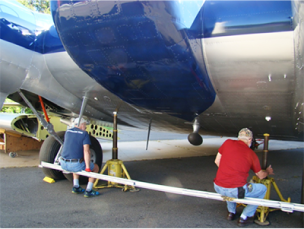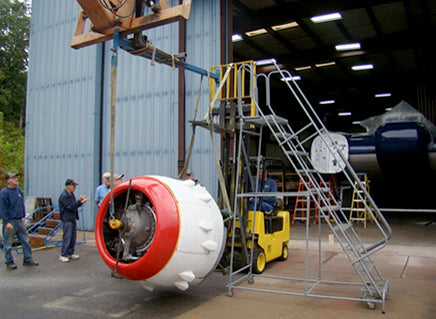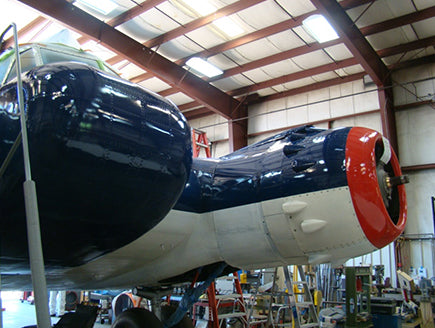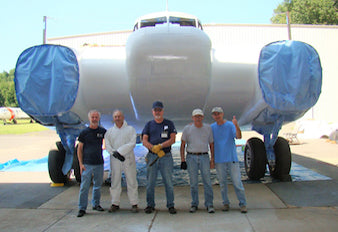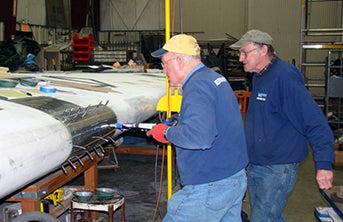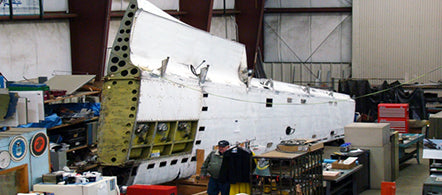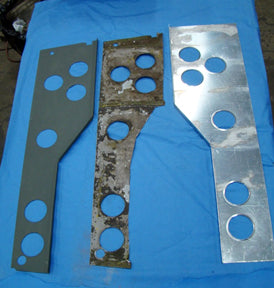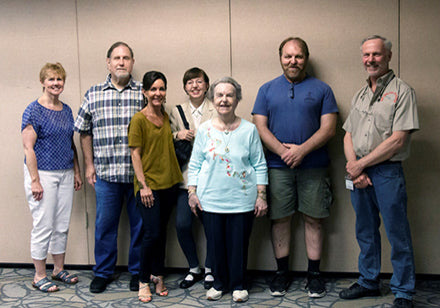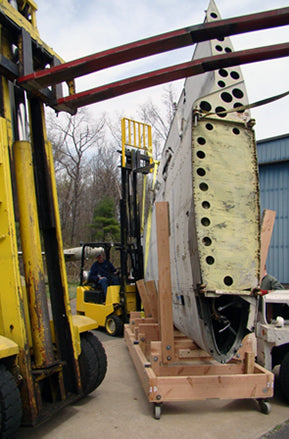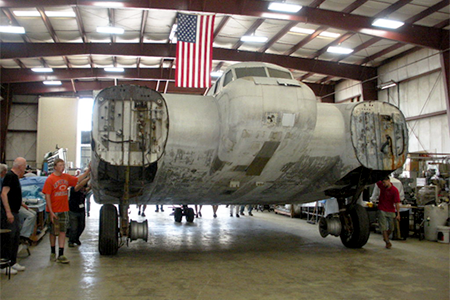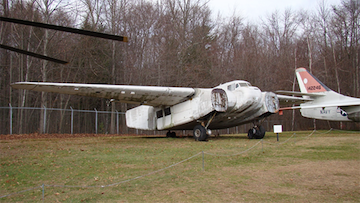RESTORATION DIARY
BURNELLI CBY-3
THE HISTORY
The Museum's CBY-3, built by the Canadian Car and Foundry, was the last of Vincent Burnelli's "lifting fuselage" aircraft. Two Wright engines were mounted side-by-side on the forward edge of the fuselage and instead of a conventional tail the CBY-3 had twin tail mounted booms that extended rearward from the main fuselage. While most aircraft designs have circular cross-section fuselages, the Burnelli has a 20 foot wide rectangular cross-section. The fuselage is in the shape of an airfoil which allows it to assist the wings in providing lift. This results not only in a wide-body cabin, but also gave the plane impressive performance. It could carry a ton more payload than a DC-3 and needed only 650 feet to takeoff.
A prolific designer, Burnelli believed that his design was stronger, safer and more efficient than conventional designs. Although eight prototypes were built between 1923 and 1945, none gained acceptance from the aircraft industry nor achieved production. This is the sole remaining Burnelli example and the only CBY-3.
Prior to the Air Museum acquiring the CBY-3 “Loadmaster” from Friendship Airport in Baltimore in 1972. It had been abandoned for ten years and during that time the engines, engine mounts and cowls had been stripped from the aircraft, as well as the cockpit instrumentation. The CBY-3 had also been vandalized and had incurred structural damage to the rear landing gear. While awaiting restoration at the Air Museum's previous location on Rte 75, the CBY-3 had a close call with the tornado that devastated our museum in 1979. The aircraft was peppered with debris causing damage to its skin.
